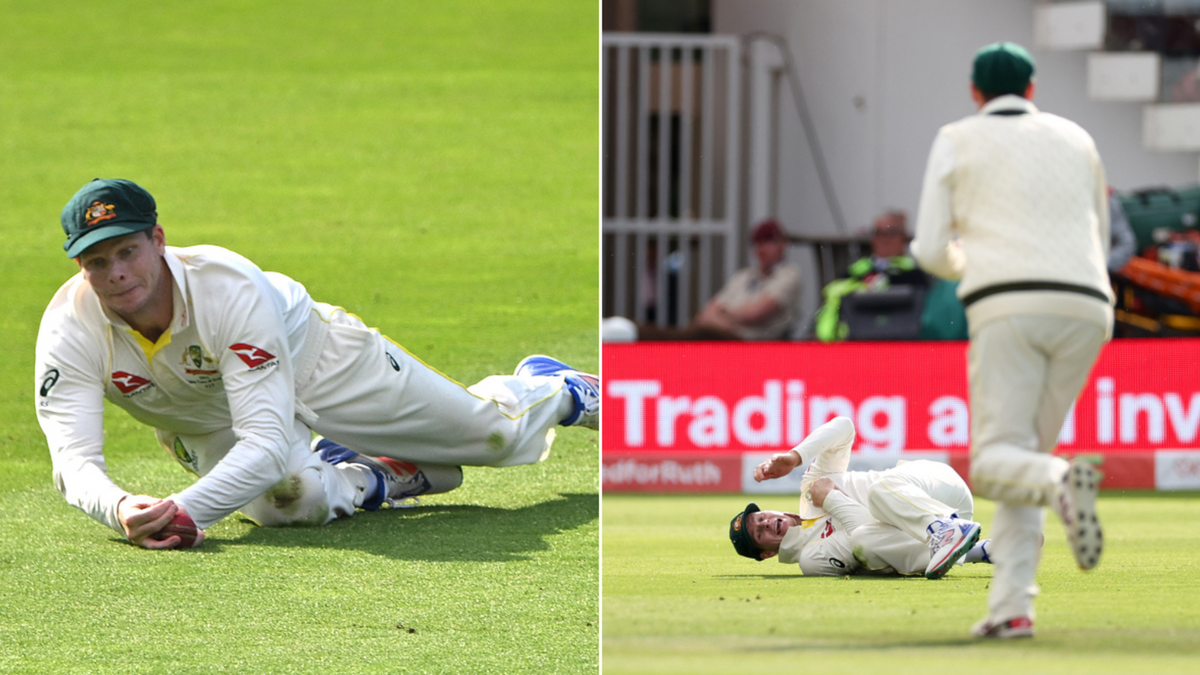
Steve Smith‘s tumbling grab to dismiss Joe Root in the Lord’s Ashes Test has kicked up a controversy over whether the catch was a fair one or not.
You can bet on the 2023 Ashes with our Match Centre partners, bet365.

Root was the last England batter to fall on day two, after a mistimed pull off Mitchell Starc was plucked by a tumbling Smith at square leg. Smith dived forward as the ball died on him, and tumbled after grabbing it – he seems to have briefly fumbled, before managing to roll and hold on with his arm.
The decision was sent upstairs, where Marais Erasmus had a key decision to make based on two aspects: was Smith in complete control of the ball and his own movements, and whether his fingers were underneath the ball preventing the ball from touching the ground.
It did not take long for those watching to draw parallels with Cam Green’s catch of Shubman Gill at the World Test Championship final, which led to considerable debate over the legitimacy of the catch. The fact that soft signals have been scrapped by the ICC ahead of the summer added to the discussion.
According to Law 33 of the Laws of Cricket, which deals with catches: “The striker is out Caught if a ball delivered by the bowler, not being a No ball, touches his/her bat without having previously been in contact with any fielder, and is subsequently held by a fielder as a fair catch, as described in 33.2 and 33.3, before it touches the ground.”
The last clause, about touching the ground is interpreted as meaning that the ball is okay to touch the grass, with fingers underneath the ball, due to Law 33.2.
Law 33.2 states, “a catch will be fair if the ball is held in the hand or hands of a fielder, even if the hand holding the ball is touching the ground”.
Law 33.3 says: “The act of making a catch shall start from the time when the ball first comes into contact with a fielder’s person and shall end when a fielder obtains complete control over both the ball and his/her own movement.”
At the debated point, when some suggested the ball was touching the ground, Smith is not in control of his own movement, since he is partway through diving. It is also hard to argue that he is in complete control of the ball, given that it pops out of his grasp afterwards, only for him to regather after a juggle. The key question, therefore, is whether the ball was grounded at any point.
Replays suggested that there was a moment where the ball was in contact with the grass, as Smith caught and rolled. But it was judged that, with his fingers around the ball, the ball had not touched the ground. TV pictures can also be misleading, with an effect called foreshortening making it look as if two objects are in contact when there is distance between them, as demonstrated in a famous segment by Tony Greig in the late 2000s.
Interestingly, Root had received a reprieve earlier in the innings, when the same pull shot, off Josh Hazlewood, ended up in wicketkeeper Jonny Bairstow’s gloves, only for a front foot no-ball to negate it.








